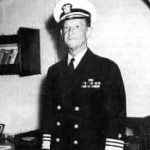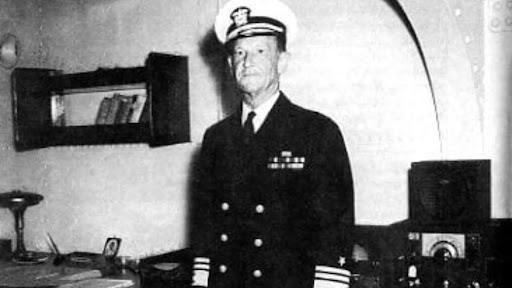Each year on the U.S. Navy’s birthday, Americans honor the service’s long tradition of protecting freedom on and beneath the seas. That tradition isn’t just built on ships and technology; it rests on people whose decisions shaped history. Admiral Frank Jack Fletcher is one of those figures. His career shows how a single leader’s judgment can influence the outcome of global conflict and how the Navy’s character—courageous, adaptive, and determined—has endured through every test.
Fletcher was born in Marshalltown, Iowa, on April 29, 1885, far from any ocean. Yet he was drawn to the sea, entering the U.S. Naval Academy in 1902 and graduating in 1906. In an era when the Navy was still finding its place in a rising American power, he gained experience on battleships, cruisers, and destroyers. Early assignments included the occupation of Veracruz, Mexico, in 1914, where he displayed calm under pressure during the rescue of civilians and earned the Medal of Honor. That rescue was less about gunfire than about discipline and human care—qualities that would define him as much as any later naval battle.
By the time World War II erupted, Fletcher had matured into a seasoned officer with a keen understanding of both surface and carrier operations. Although not a career aviator, he quickly grasped the changing nature of naval warfare, in which aircraft carriers would supplant battleships as the decisive instruments of power. When the Pacific war began after Pearl Harbor, Fletcher was entrusted with carrier task forces at the very heart of the fight.
In May 1942, he commanded U.S. forces at the Battle of the Coral Sea, the first major naval engagement fought entirely by carrier aircraft. Fletcher’s handling of limited resources and coordination with Australian forces helped blunt a Japanese advance toward Port Moresby. It was a strategic turning point that checked Japan’s momentum, even though both sides suffered heavy damage. Only a month later he played a key role at the Battle of Midway, serving as overall tactical commander. Working alongside Admirals Raymond Spruance and Chester Nimitz, he directed carrier strikes that destroyed four Japanese carriers and shifted the balance of the war. These victories are now recognized as pivotal, but at the time they demanded decisions under intense uncertainty and pressure.
Fletcher’s reputation is complex because he was willing to make calls that invited criticism. During the initial landings at Guadalcanal in August 1942, he withdrew his carriers earlier than many commanders on shore wanted. His reasoning was straightforward: the Navy had only a few operational carriers and could not afford to risk them against waves of Japanese land-based bombers without adequate fuel and air cover. His choice left the Marines ashore with less protection and forced them to fight harder to secure the island. Some contemporaries branded him overly cautious, but later historians have noted the hard arithmetic he faced. Carriers lost then could not be replaced quickly, and their survival allowed the Navy to fight on and ultimately win in the Solomons and beyond.
Fletcher’s service did not end with these headline battles. He later commanded forces in the Aleutian Islands and the North Pacific, operations far less celebrated but critical for keeping Japanese forces off balance and securing sea lanes. These campaigns involved harsh weather, limited supplies, and long periods of isolation—reminders that naval service demands persistence and professionalism as much as dramatic engagements.
Beyond operations, Fletcher represented an older but enduring Navy ethic: loyalty to subordinates, insistence on preparation, and a belief that command is a trust, not a prize. He was known for listening to his officers and for a dry sense of humor that defused tension on the bridge. While he avoided the limelight and rarely promoted his own record, he expected precision and courage from those under him. Even after the war, when some historians and fellow officers questioned his decisions, Fletcher declined to write a memoir defending himself, believing that results and the Navy’s ultimate victory spoke louder than personal arguments.
His life also reflects how the Navy evolved in the twentieth century. Fletcher began in an age dominated by battleships and gunnery; he ended as a senior admiral in a service defined by carriers, radar, and long-range air power. He absorbed these changes without nostalgia, supporting new tactics and technologies that kept the Navy relevant in a nuclear and missile era. Adaptability is a hallmark of the Navy’s 250-year history and a reason it continues to safeguard U.S. interests worldwide.
When we celebrate the Navy’s birthday, we celebrate not only its ships and sailors but also the qualities Fletcher embodied. He showed that victory requires more than daring attacks. It demands cool assessment when information is incomplete, the willingness to act despite personal risk to reputation, and the discipline to preserve forces for battles yet to come. In this way, Fletcher’s story mirrors the larger Navy story: a service that balances bold action with long-term strategic patience, defending freedom in both visible and invisible ways, and measuring success not in headlines but in enduring security.
Frank Jack Fletcher died in 1973 and rests at Arlington National Cemetery. The sea had defined his life from a Midwestern boyhood to his final years. Today, every time an Arleigh Burke–class destroyer or a carrier strike group sails in defense of open seas, it carries forward principles Fletcher lived by: readiness, calculated courage, and steadfast service. Remembering him on the Navy’s birthday helps us see that these qualities—quiet judgment as well as decisive action—are what keep the Navy strong and America free.











